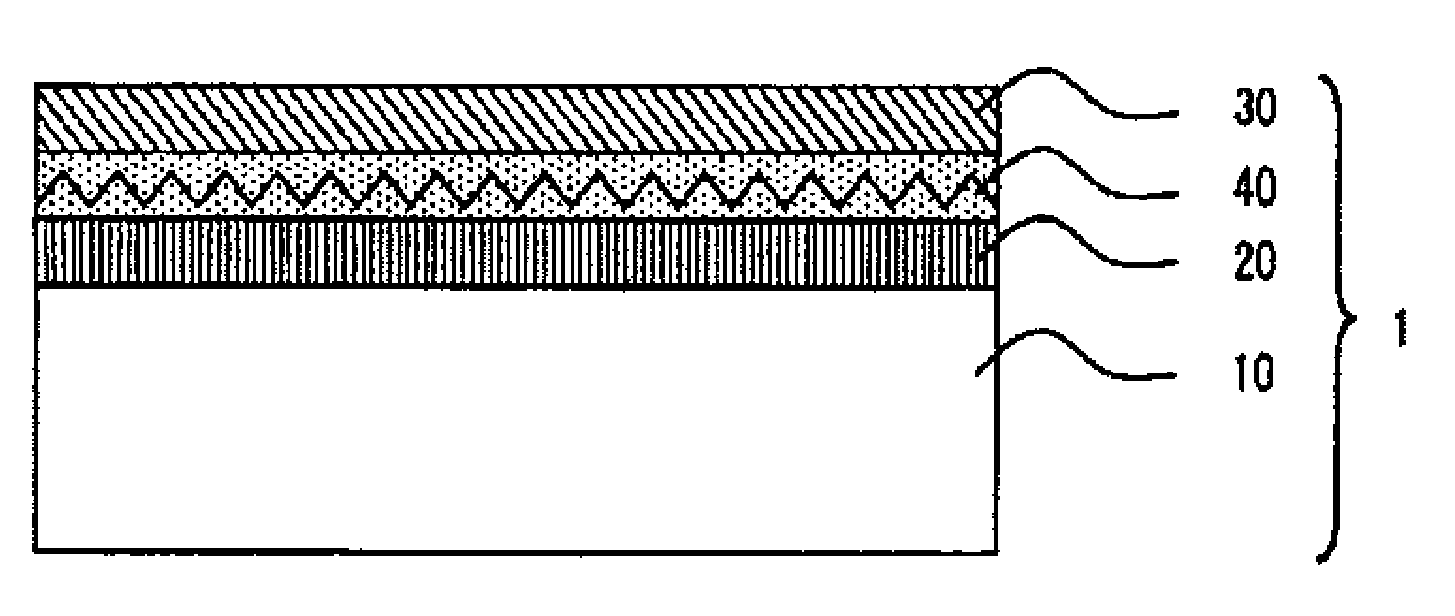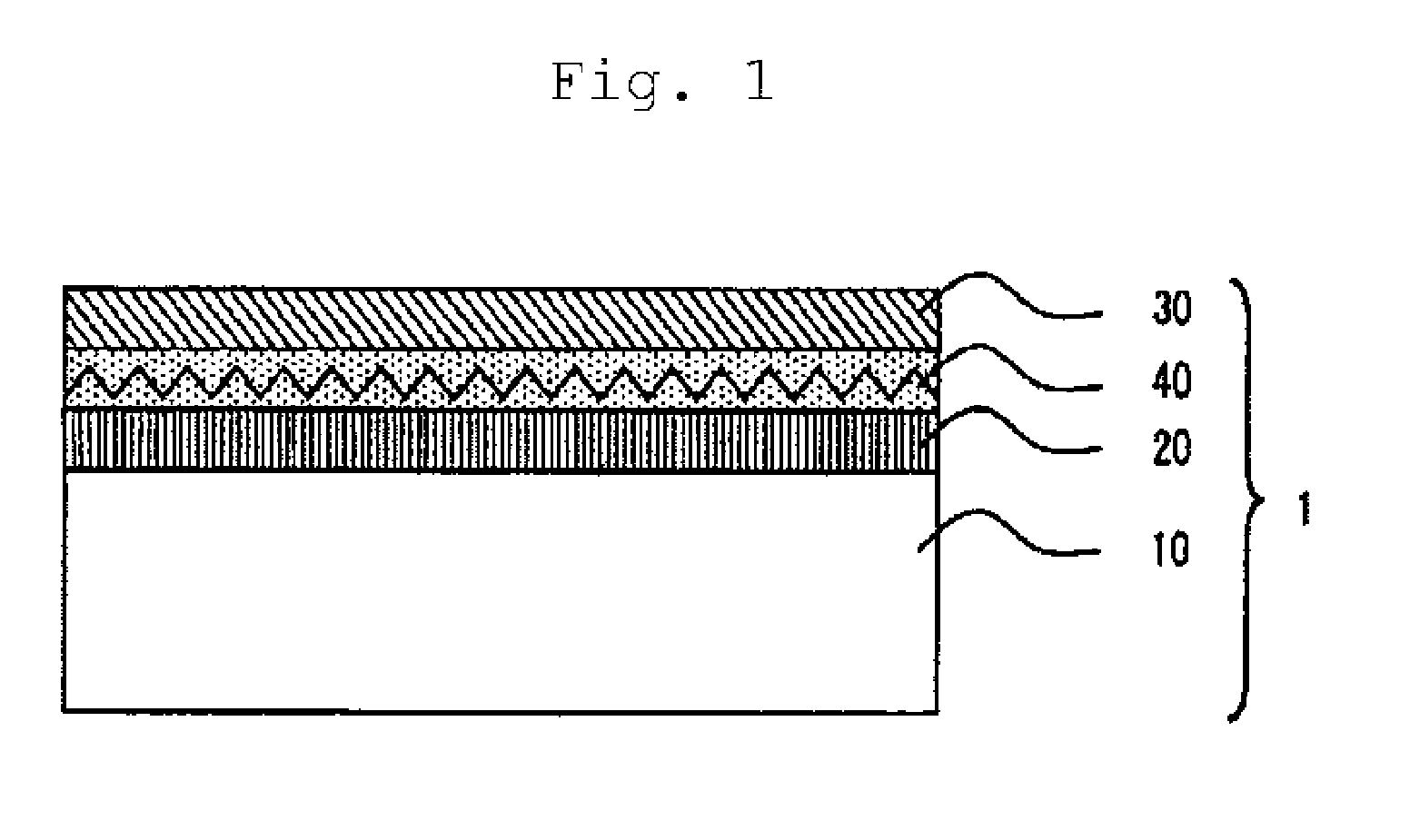Antireflection film and method for manufacturing the same
a technology of antireflection film and antireflection film, which is applied in the field of antireflection film, can solve the problems of increasing the haze of antireflection, easy phase separation, and poor compatibility of silicon compounds and fluorinated compounds, and achieves the effect of improving the hardness of the low refractive index layer
- Summary
- Abstract
- Description
- Claims
- Application Information
AI Technical Summary
Benefits of technology
Problems solved by technology
Method used
Image
Examples
production example 1-1
Preparation of Surface-Modified Hollow Particles (Surface-Modified Hollow Silica Fine Particles LM(1))
[0334]An isopropanol dispersion of hollow silica fine particles with a mean particle size of 50 nm (product of Catalysts & Chemicals Industrial Co., Ltd.), as hollow particles, was subjected to solvent substitution from isopropyl alcohol to methyl isobutyl ketone (hereinafter also abbreviated as MIBK) using a rotary evaporator, to obtain a 20 wt % dispersion of silica fine particles. Next, 5 wt % 3-methacryloxypropylmethyldimethoxysilane was added to 100 wt % of the methyl isobutyl ketone dispersion, and the mixture was heat treated at 50° C. for 1 hour to obtain a 20 wt % methyl isobutyl ketone dispersion of surface-treated hollow silica fine particles.
[0335]The surface-modified hollow silica fine particles LM(1) obtained in this manner were measured using a Microtrac particle size analyzer by Nikkiso Co., Ltd. and were found to have a mean particle size of d50=50 nm.
production example 1-2
Preparation of Surface-Modified Solid Particles (Surface-Modified Solid Silica Fine Particles LS(1))
[0336]To 100 parts by weight of a methyl isobutyl ketone dispersed silica sol with a mean particle size of 12 nm (MIBK-ST:, trade name of Nissan Chemical Industries, Ltd.: silica solid content: 20 wt %) as solid particles, there was added 5 wt % 3-methacryloxypropylmethyldimethoxysilane, and the mixture was heat treated at 50° C. for 1 hour to obtain a 20 wt % methyl isobutyl ketone dispersion of surface-treated solid silica fine particles.
[0337]The surface-modified solid silica fine particles LS(1) obtained in this manner were measured using the aforementioned particle size analyzer and were found to have a mean particle size of d50=12 nm.
production example 2
(1) Removal of Surface Adsorbed Ions
[0338]Water-dispersed colloidal silica with a particle size of 90 nm (SNOWTEX ZL, trade name of Nissan Chemical Industries, Ltd., pH 9-10) was subjected to ion exchange for 3 hours using 400 g of a cation-exchange resin (DIAION SK1B, product of Mitsubishi Chemical Corp.), and then 200 g of an anion exchange resin (DIAION SA20A, product of Mitsubishi Chemical Corp.) was used for 3 hours of ion exchange, followed by washing to obtain an aqueous dispersion of inorganic fine particles with a solid concentration of 20 wt %.
[0339]The Na2O content of the inorganic fine particle aqueous dispersion was 7 ppm for each inorganic fine particle.
(2) Surface Treatment (Introduction of Monofunctional Monomer)
[0340]To 10 g of the inorganic fine particle aqueous dispersion treated in (1) above there were added 150 ml of isopropanol, 4.0 g of 3,6,9-trioxadecanoic acid and 4.0 g of methacrylic acid, and the mixture was stirred for 30 minutes.
[0341]The obtained mixtur...
PUM
| Property | Measurement | Unit |
|---|---|---|
| refractive index | aaaaa | aaaaa |
| refractive index | aaaaa | aaaaa |
| room temperature | aaaaa | aaaaa |
Abstract
Description
Claims
Application Information
 Login to View More
Login to View More - R&D
- Intellectual Property
- Life Sciences
- Materials
- Tech Scout
- Unparalleled Data Quality
- Higher Quality Content
- 60% Fewer Hallucinations
Browse by: Latest US Patents, China's latest patents, Technical Efficacy Thesaurus, Application Domain, Technology Topic, Popular Technical Reports.
© 2025 PatSnap. All rights reserved.Legal|Privacy policy|Modern Slavery Act Transparency Statement|Sitemap|About US| Contact US: help@patsnap.com



